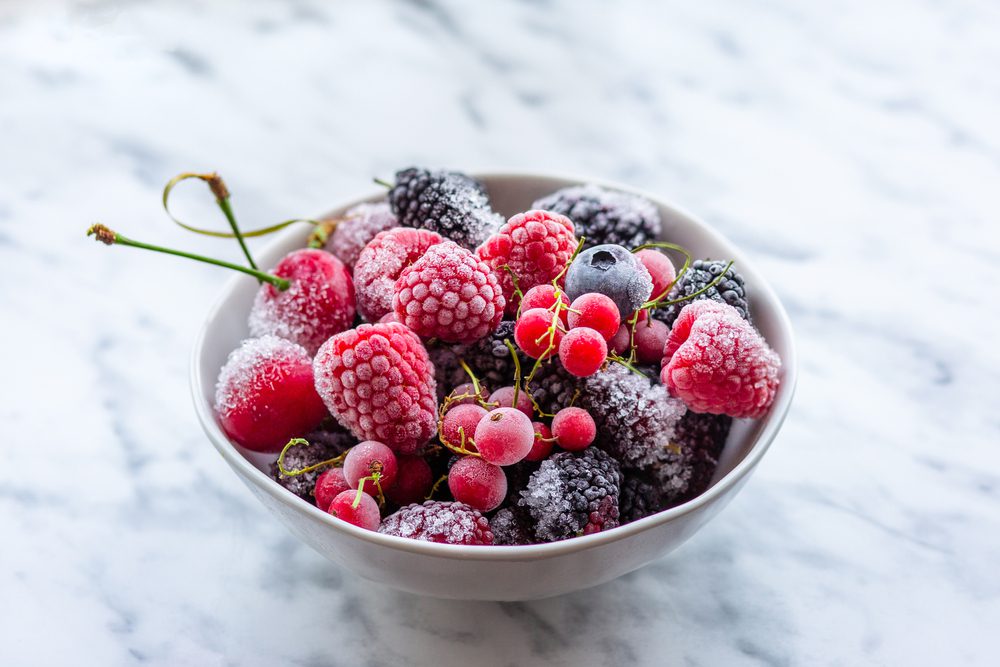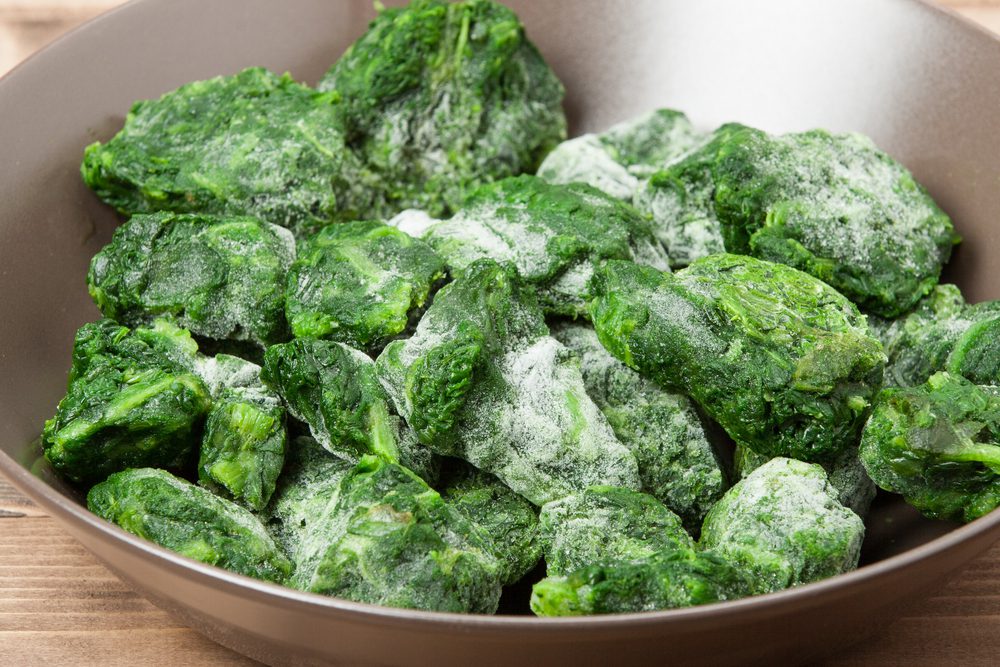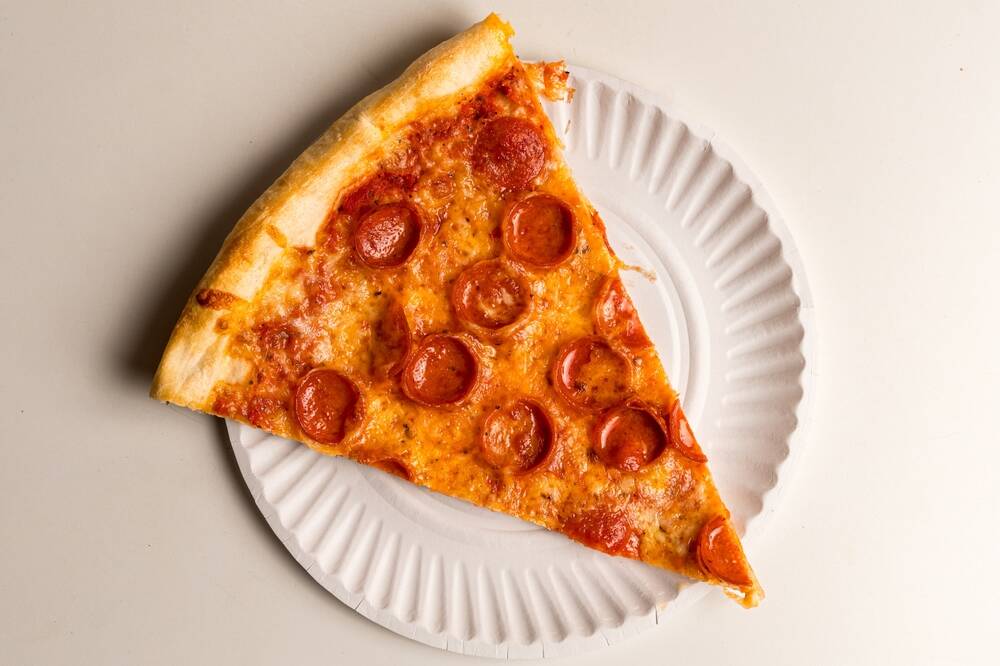I may live alone, but that doesn’t mean that my freezer isn’t jam-packed. I’m on a budget, so I always take advantage of how long goods last in the freezer. It’s a great technique that helps me cut down on food waste, and I do this for two reasons. One, it helps me save money, and two, it’s better for the environment.
According to the latest data, the average American throws away about $2,300 worth of food each year. That’s more than what the average American annually spends on apparel, property taxes, household heating, and vehicle gasoline.
In other words, how you store your food can either drain your wallet or help you save some serious cash. There are lots of frozen foods that I love to buy, sometimes to have a treat on hand and sometimes to save money. Most of them are sold at a better price than the fresh ones and can last several months in the freezer.
Here are 6 frozen foods you should always buy to save money!

1. Berries
Berries are frozen at their peak of ripeness, whereas the fresh versions that aren’t locally produced are usually picked before they are ripe, so the ripening process can occur during transportation.
Whether it’s strawberries, blueberries, or raspberries, I love fresh, in-season berries. But sometimes they can be pretty expensive, so I choose the frozen ones instead. I used to think this was a compromise until I learned that frozen berries, especially blueberries, have 72% more fiber and two times the antioxidants compared to regular, fresh blueberries.
Not only are these small fruits super healthy, but they are also versatile. I personally replace fresh berries with the frozen version in many recipes, whether it’s smoothies, baked goods, or overnight oats.
The best part? Frozen berries are cheaper and usually come in larger quantities. But that’s not all! You can also store them in the freezer for several months.
2. Peas and Edamame
If you’re striving to stick to a balanced diet, you’re probably looking for ways to add a wide range of nutrients to your meals. I know, this can be expensive, especially if you choose to buy fresh vegetables and fruits. But it doesn’t have to be like that.
For instance, edamame and green peas boast an impressive 9 and 4 grams of protein, respectively, per half-cup serving. Buy them frozen, and you’ll get almost the same amount of nutrients since they don’t change their nutritional qualities significantly.
Green peas and edamame are great if you’re looking for a plant-based way to incorporate fiber and protein into your meal and you don’t have anything fresh in your fridge.
This fiber-protein combo can help you cook some super-filling and affordable foods. While canned peas have a long shelf life, I choose the frozen version because it usually has less added sodium than its canned counterpart.
They cook really quickly and help you increase your veg intake by eating soups, pasta, sets, casseroles, and more. I’m always discovering new dishes to add them to.

3. Spinach
You’ve probably heard that dark, leafy greens are super healthy and packed with lots of nutrients. Greens like spinach, for instance, are full of potential health benefits. They are known to improve blood pressure and exercise recovery and promote more radiant skin.
While they are a great healthy choice, fresh greens don’t usually come cheap and go bad pretty quickly in the fridge. I can’t tell you how many times I’ve bought fresh greens, thinking I’ll eat them all, only to discover they spoiled after a few days. That’s definitely a waste of money.
So now I usually choose to buy frozen spinach instead of the fresh version. In fact, I make sure I always have a few packs of it on hand. It makes it very easy to add greens to everything, from smoothies to stews, and I get all of the vitamins and fiber with none of the waste.
You can’t obviously use frozen spinach for salads. However, if I’m going to cook a recipe that calls for fresh spinach, I make sure that I’ll use the entire package.
4. Meat
Buying frozen meat helps me save lots of money! I like to buy it in large portions at Costco so I can take advantage of the discounted per-pound price. I usually only cook for one, so the meat I buy I portion out and store it right away in my freezer.
This strategy makes dinner planning easy because I already have the proteins, so I only have to choose a side dish. Plus, my weekly grocery bill is way lower. The downside is that you need to plan your meals ahead so you can thaw frozen meat. However, once you get used to this, it won’t be an issue.
My advice would be to pre-portion what you buy. This way, you make sure you’ll only use what you need when you need it. I personally don’t eat meat every day, so this method helps me avoid fresh meat spoiling and being wasted.

5. Fish
Fish is known for not lasting long in the fridge, so once you buy some fresh fish, you only have up to two days to cook it. Not to mention that it’s one of the most pricey proteins at the grocery store, so it’s awful when you have to throw it away unused.
I like to eat fish at least two times per week, as it’s super healthy. If you’re on a budget (like me), but you still want to eat more fish, you can do the same thing as with meat: buy larger portions and keep them frozen until you’re ready to use one.
What I do is buy a larger cut of fish and cut it into individual portions. Next, I put them in the freezer, and when I want to eat fish, I just thaw a single portion, and that’s it. The result? Lots of nutrients and zero waste. Oh, and as another bonus, fish usually thaws much faster than red meat or poultry.
6. Bread
During the pandemic, I realized that making your own homemade sourdough bread isn’t that hard. So I bought this book and started doing it. It may take some time, but for me, it’s like a therapeutic process.
As you may know, though, fresh bread (or any bread) doesn’t have a very long shelf life. But here’s what I do: after I buy or bake a loaf of bread, I slice it and put it in the freezer. The reason why I do that is because I hate when I open a bag only to find mold on my bread. It’s frustrating when this happens, as it means I either have to head to the store to buy another one or not eat bread at all. And of course, this is also a waste of money.
So now that I have my presliced bread in the freezer, I can easily have as many pieces as I need to. This also helps me justify purchasing fresh whole-wheat bread when I don’t have time to make my own. It may cost a few dollars more than the typical store-bought one, but I know it will last me longer.
You may also want to read 8 Smart Ways to Save Money at the Grocery Store.








